It was 1939, the year Hitler declared the Second World War, in Mikhola, a remote village in South Sikkim, the dreams of a young boy all but came to an abrupt end. For some years, the boy had struggled to learn and study under uncertain and unlikely circumstances. With the coming of Birkha Bahadur Subba, a graduate from Darjeeling, the road to education had suddenly opened up for Chandra Das. Subjects like history and geography, in addition to basic reading and writing skills that he had acquired, held promises of a wider horizon. But the teacher, who was instrumental in holding out possibilities, was abruptly called home to Darjeeling, where there was a panic because of the declaration of war. Chandra Das, deeply saddened, went to bid his teacher farewell. To his amazement, his hope revived when his teacher said to him, “Chandra Das, if you ever decide to come to Darjeeling to study, you don’t have to worry. I will arrange for your school admission and lodging.”
School was closed for winter vacation, and like other children, Chandra Das also worked in the fields. One day, when he was weeding dal with his older brother, he told him what his teacher had promised. He said he wanted to go and pursue his studies. His brother told him, “I have no problem with that, but you will have to convince Bau.”
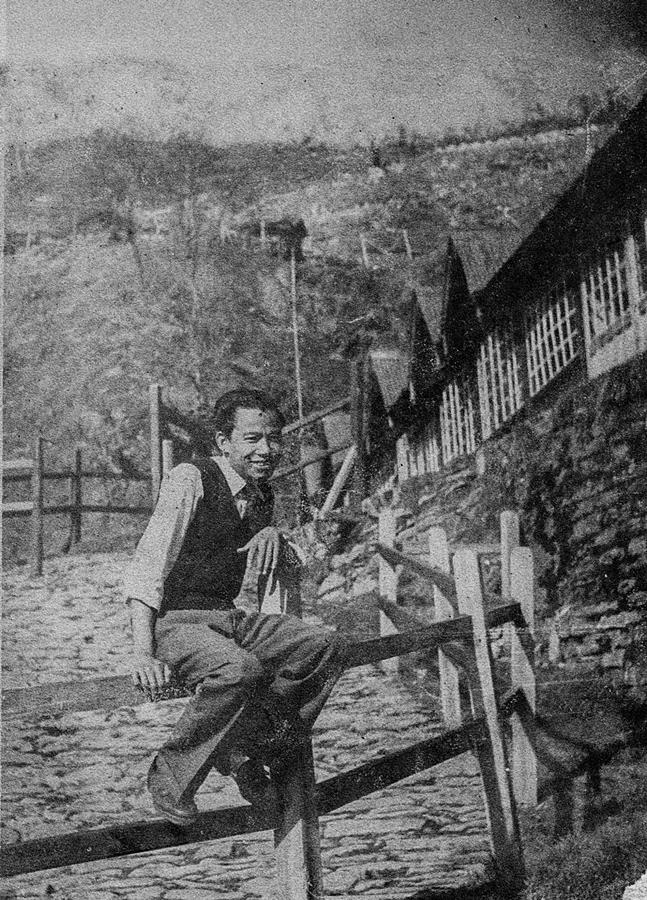
So, after the evening meal, Chandra Das plucked up his courage and told his father what his teacher had promised, and that he wished to go to Darjeeling to study. His father’s immediate response was, “Well, whatever you have learnt here is good enough for us. There is no need to study further. Besides, where is the money?”
Chandra Das pointed out, “Do you see the officers in Namchi? What is the difference between them and us? The only difference is that they are educated and we are not.”
Later, his mother, who was silent throughout this exchange, took him aside and told him, “Son, you go. Even if I have to sell tomatoes in the market, I will find the money.”
Thus, the next stage of Chandra Das’ journey of discovery began. When he arrived in Darjeeling, his teacher arranged for his admission to the St. Roberts School, where he was also working. Chandra Das’ diligence paid off; he came first in class and was awarded a scholarship. In 1945, after completing his matriculation, he returned to Namchi and briefly taught in his previous school on a voluntary basis. However, he was restless, and in 1946 he left once again for Darjeeling where one of his teachers told him about a vacancy in the Civil Supplies Office, and encouraged him to apply for the post of a clerk. He submitted an application, was interviewed and hired on the spot.
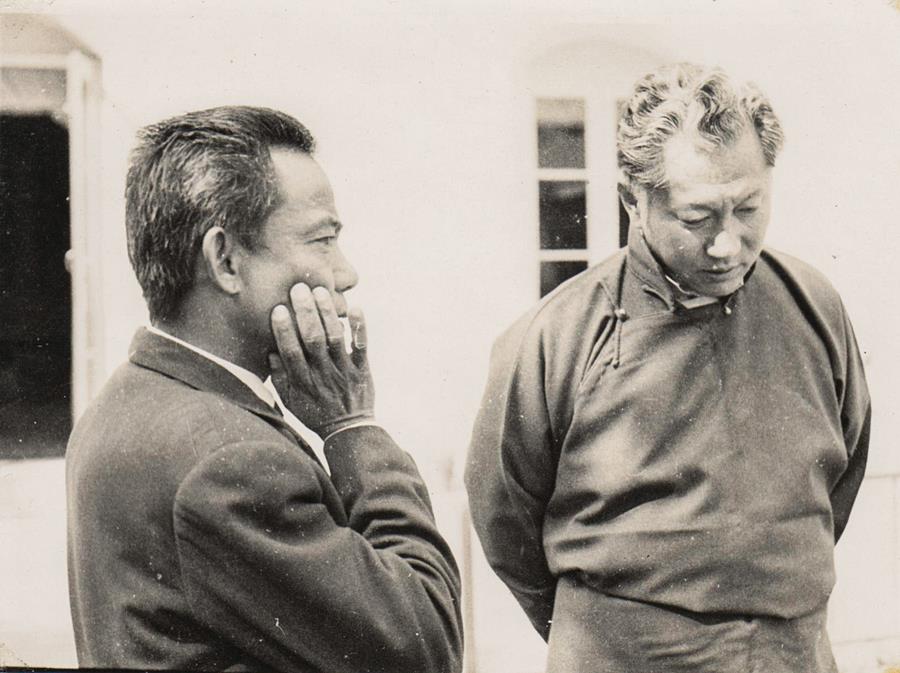
While Chandra Das worked in the Civil Supplies Office he was also exposed to momentous political changes. With the Indian independence imminent, many political parties emerged—the Congress, All India Gorkha League, and Communist and Socialist parties. The communal nature of the All India Gorkha League did not appeal to him. He reflects, “Perhaps because of Sikkim’s influence on me.” There were plenty of impassioned speeches given by an assortment of speakers. To his astonishment, there were speakers who had merely passed class seven, while amongst the audience sat professors who listened in rapt attention. Young Chandra Das’ head swirled with new ideas, and he drew inspiration from political ideas of freedom and equality.
During that time, some Bengali friends told him about Basant Ghosh who had come to Darjeeling to speak to young men interested in political education. So, Chandra Das, along with his friends M.B. Gurung, R.C. Sinha and Pasang Sherpa, went to listen to Ghosh, who spoke about the different political parties and their respective ideologies, including the Congress, Socialist Party, Hindu Mahasabha and the Muslim League. Chandra Das says, “For the first time I was able to understand the different strands of political ideologies.”
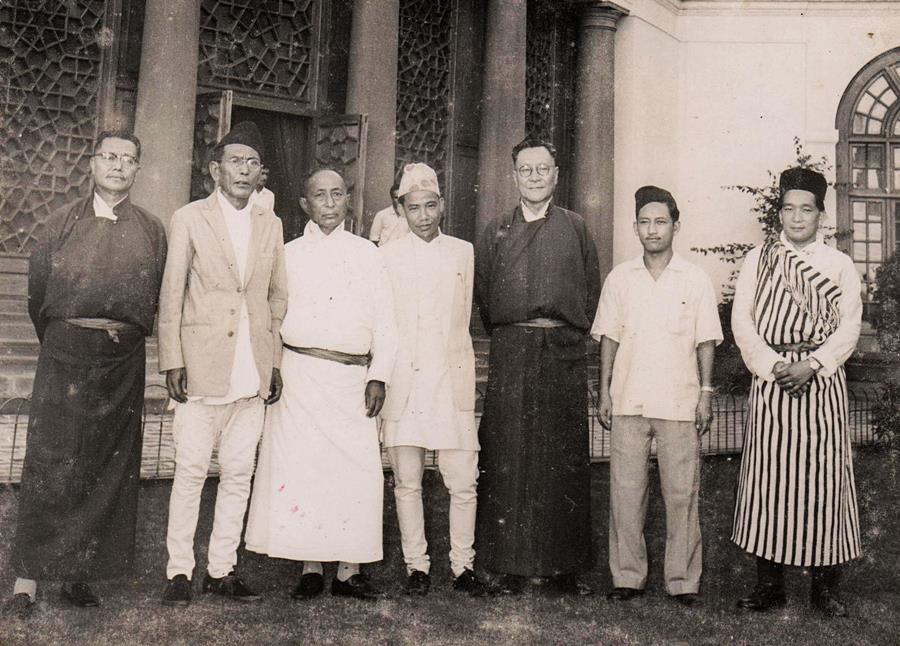
One day, Basant Ghosh, who must have observed Chandra Das’ serious attentiveness, asked him to be the secretary of the Socialist Party in Darjeeling. Bemused at the offer, Chandra Das asked how was he to survive without a job? Basant Ghosh assured him that the party would take care of his needs. So the next morning, Chandra Das presented his resignation to the officer-in-charge of the Civil Supplies who asked him in surprise what he intended to do. Prompt came the reply, “I want to get into politics.” The Englishman smiled and accepted his resignation letter. Thus began Chandra Das’ life as a political activist.
On 15 August 1947, Chandra Das attended the Independence Day celebration in Darjeeling. The entire town was decked with colourful buntings and there was an air of festivity and optimism. He witnessed the lowering of the Union Jack by the District Collector and the unfurling of the Indian national flag. There were shouts of joy and the national anthem was sung by the assembled students, followed by many speeches by representatives of different political parties.
Chandra Das decided to return to Sikkim. When he arrived in Mikhola, he inquired whether anyone had any idea about what was going on in India. None were aware about the momentous changes. When he told them about independence, and that the British were leaving, the reactions were varied. Some said, “Oh they will be back,” while others were not convinced whether Gandhi would be able to rule the country.
When he went to Namchi, he found that there, too, people were unaware about the developments in India. Then Bhadru Mangar from Assangthang arrived with a copy of the document A Few Facts About Sikkim, written by Tashi Tsering, the leader of the 1947 movement in Sikkim. The document highlighted all the ills of the feudal system that existed in Sikkim, and the need to abolish such a system.
People urged Chandra Das to go to Gangtok to assess the situation. So, he left for Gangtok in September. By chance, he met Bal Bhadra Rai at the police chowki, who invited him to stay with him at his home, Rai Cottage. In Gangtok, Chandra Das met his old friends, Agam Singh Tamang, Padam Singh Subba, Tulsi Bahadur Chettri and Nima Wangdi Lepcha. They were all teachers and had started a literary association called APATAN, meaning ‘that which cannot be destroyed’. They met every Saturday with a piece of original writing in various genres. Their meetings were held in secret because such associations were suspect and discouraged by the ruling dispensation.
Chandra Das read his translation of A Few Facts About Sikkim. “He did so with gusto, lacing his reading with witty remarks.”
The date 7 December, 1947 is etched in Chandra Das’ memory forever. On that day, different political parties, such as, Sikkim Sudhar Samaj (led by Tashi Tsering, Sonam Tshering and Kezang Tenzing from Gangtok), Praja Sammelan (formed at Temi Tarku under the leadership of Gobhardan Pradhan and Dhan Bahadur Tewari), Praja Mandal (formed by Kazi Lhendup Dorji Khangsarpa from Chakung), had all assembled at the Polo Ground, now known as Paljor Stadium. A new party, the Sikkim State Congress was formed by combining all these parties. For the first time, the people of Sikkim heard political speeches, where each speaker elaborated on the injustices and suffering of the people, change being the common theme across the spectrum. The main speakers were Tashi Tsering, Sonam Tshering, Roy Choudhury, Helen Lepcha and Chandra Das. Tashi Tsering was elected the President of the new party.
Chandra Das read his translation of A Few Facts About Sikkim. “He did so with gusto, lacing his reading with witty remarks. The crescendo of applause that followed his speech marked him as a budding hero in the inchoate politics of Sikkim,” writes L.B. Basnet in Sikkim: A Short Political History of Sikkim.
He distributed cyclostyled copies of the pamphlet among the people and talked to them about the content of the document, while the older politicians were meeting separately to discuss a way forward. Chandra Das exhorted the people not to be afraid and to refuse forced labour since it was outlawed in 1946.
He recalls that on the basis of A Few Facts About Sikkim, the political leaders formulated a three-point demand:
1. No rent,
2. Formation of an Interim Government as a necessary precursor to the establishment of a democratic and responsible government, and,
3. Accession of Sikkim to the Indian Union.
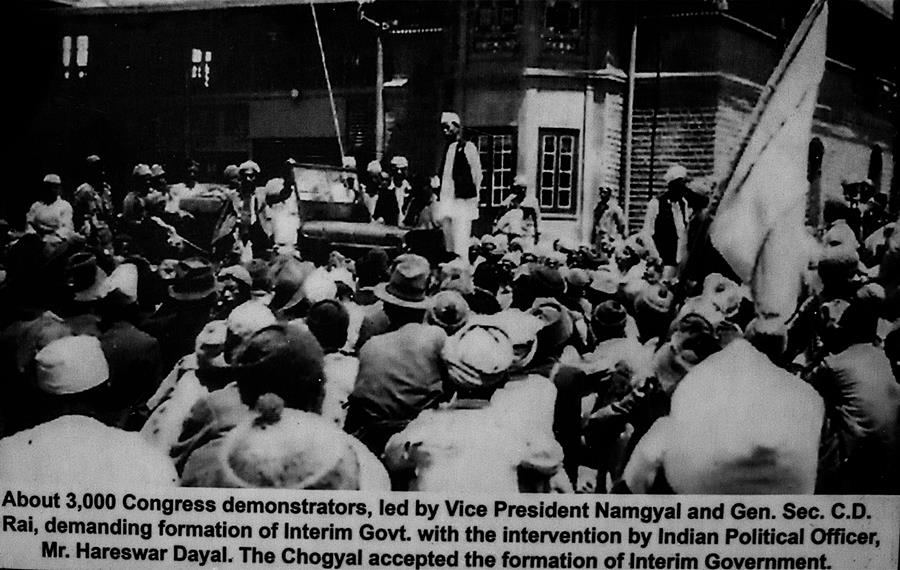
On 9 December, 1947, under the leadership of Tashi Tsering, a five-member delegation met the Maharaja, Sir Tashi Namgyal with these demands.
The Maharaja promised to curtail the powers of the landlords and assured the delegation of the eventual abolition of landlordism. As an interim arrangement, he also agreed to having three nominees of the State Congress as secretaries until modes of sending people’s representatives to the State Council were worked out. The third demand of accession to India was, for the time being, set aside for future deliberation.
The Congress party nominated three secretaries, Sonam Tsering, Raghubir Basnet and Capt. Dimik Singh Lepcha, a representative from the Bhutia, Nepali and Lepcha community respectively. Unfortunately, these three secretaries began to behave worse than the landlords and when the party high command recalled them, they refused to relinquish their posts. As a face-saving gesture, Chandra Das suggested that they should continue, but for a stipulated time of six months. If they failed to be effective, they would be compelled to resign their posts.
Meanwhile, the party members felt it was necessary to meet the Indian Prime Minister, Jawaharlal Nehru, to press for assistance to bring about changes in Sikkim’s polity. Nehru, the first Prime Minister of independent India, was a world-renowned political figure, respected for his dedication to freedom and equality. The party nominated Tashi Tsering, the president of the State Congress Party, and Chandra Das to travel to Delhi to meet Nehru.
Chandra Das waited for Tashi Tsering to initiate their travel plans but he seemed to dilly-dally. Finally, when asked, Tashi Tsering replied that they had no money. So, the party members contributed funds to send them on their journey and assured them that if they needed some more, money could be wired to them.
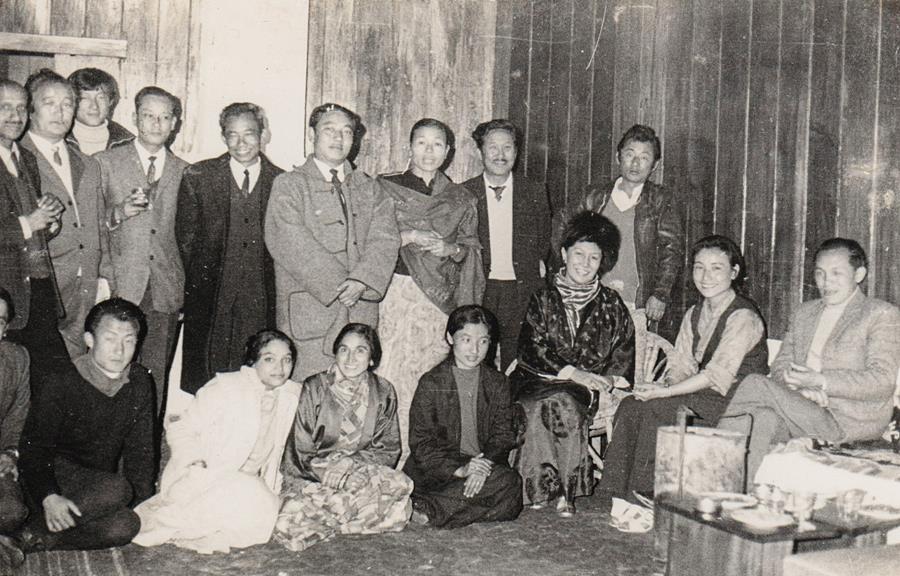
In December 1947, they left for Delhi via Banaras where they attended a meeting of the Socialist Party. In addition to stalwarts of Indian Socialist Party, they met members of the Nepali Socialist party, such as B.P. Koirala, who was to later become the first elected Prime Minister of Nepal.
When they arrived in Delhi, they found lodging in Ranjit Hotel, near the railway station. They were not sure how to proceed. Tashi Bau (Tsering) once again stalled and hesitated. Then Chandra Das decided that he would go on his own and asked for some money for travel. He took a bus from the station to Connaught Place. He knew about the circulation office of Jansatta, the Socialist paper that he subscribed to. The office was located in Odeon building and the man in charge was Apte. Chandra Das looked around and saw a man wearing a Gandhi cap. He called him and enquired whether he knew where the Odeon building was. The man did not know the Odeon building but invited Chandra Das to accompany him to his office and told him where he should go. By this time, he was feeling a little hungry and went to eat at a street stall near Plaza Cinema, where he saw a boy, thin as a sparrow. This boy approached him and asked whether he was a Nepali. Since Chandra Das was wearing the daura suruwal, he retorted, “What do you think?” The boy looked hungry and Chandra Das bought him some food as well. The boy revealed that he had been promised a job in Dehradun by Ari Bahadur Gurung and together they proceeded to meet him.
Ari Bahadur was a member of the team selected to draft the Constitution of India. When they arrived at his office, he greeted Chandra Das warmly, and when he found out his mission, he sent his orderly with him to Nehru’s office. The security guard was a Nepali who ushered him in. At the office, Nehru’s secretary informed him that the Prime Minister was in Dehradun attending a military function, but would be in the office the next day.
When he returned to the hotel with a dinner invitation from Ari Bahadur Gurung and an appointment with the Prime Minister of India, a relieved Tashi Tsering complimented him, “The boy has done it.”
They spent a pleasant evening with Ari Bahadur Gurung in the Constitution canteen. Next morning at eight o’clock sharp, they were at the Prime Minister’s office. They were taken to a room upstairs, a smaller room furnished with seats. They were told that the Prime Minister was at Birla Mandir delivering a lecture. Soon, the Prime Minister arrived and they were immediately ushered in. As it is customary, Tashi Tsering presented a khada and Chandra Das folded his palms into a namaste. They gave their prepared memorandum.
But the third demand of accession he rejected, saying, “Sikkim is a very small kingdom, and we do not want to be seen in the eyes of the world as using coercion to annex it to our country.”
Nehru read it and replied, “You are talking about small landlords in Sikkim, the Indian landlords are so large and powerful, protected by their own armies. This should not be a problem. As for fighting to establish a democratic and responsible government, that is what we have been fighting for all our lives. And we will support such movements in the Himalayan kingdoms of Nepal, Sikkim and Bhutan.” But the third demand of accession he rejected, saying, “Sikkim is a very small kingdom, and we do not want to be seen in the eyes of the world as using coercion to annex it to our country.”
Nehru asked them a few questions. One was “What is the difference between Bhutanese and the Sikkimese language?”
They were not able to give any credible answer. Tashi Bau volunteered, “The language in Bhutan is rough and our Sikkimese language is more refined.”
Then Nehru informed them that one of the princes of Sikkim was studying at St. Stephen’s College. “To our embarrassment, we did not know anything about it,” Chandra Das said.
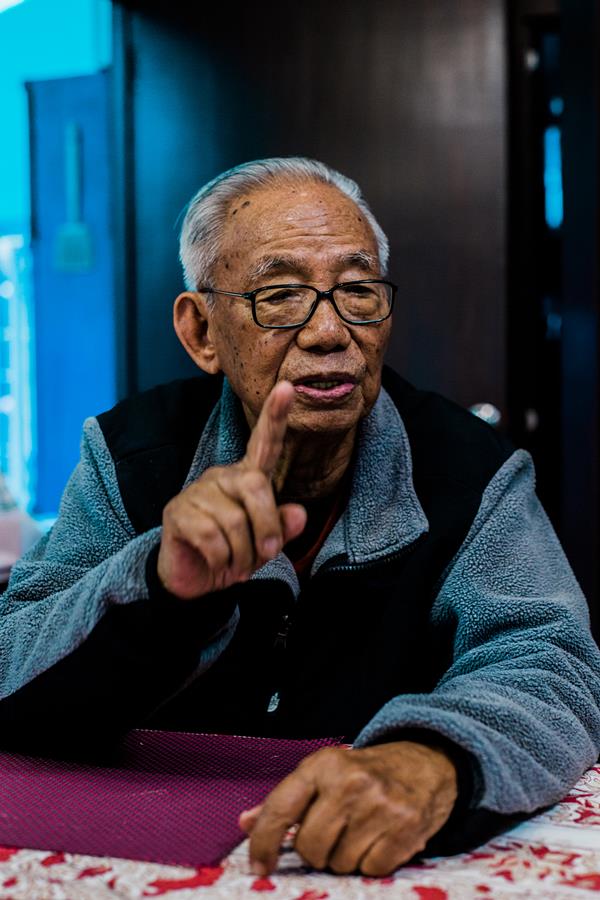
Having accomplished their mission, Tashi Tsering and Chandra Das returned to Sikkim via Calcutta. Being the festive season, Tashi Tsering met many of his friends from Darjeeling and spent a few enjoyable days with them. Meanwhile Chandra Das attended the Socialist conference in Calcutta, where he once again met friends from the Nepali Congress, and listened to speeches given by the likes of Aruna Asaf Ali and other stalwarts of the party.
Chandra Das had a nagging doubt that the people in Sikkim would not believe that they had actually met the Prime Minister of India. He could imagine the jeers and comments, “You say you met Nehruji? Most probably you were chased away from his doorsteps!” He regretted that there were no photographs taken, and was keen to establish the truth of the historic meeting. When he mentioned this to Tashi Tsering, he was taken aback. “Tashi Bau was a gentleman, and not a politician.” Chandra Das commented.
To ensure that the people would believe their meeting with Nehru, Chandra Das contacted the editor of the Socialist Union of India, Communication. On Sunday, a banner headline proclaimed the meeting and set to rest any doubts about the historic meeting of the two delegates from Sikkim with the first Prime Minister of India.
8 comments on “CHANDRA DAS RAI: IN HIS OWN WORDS”
Leave a Reply
Latest Posts
Latest Comments
No 'Comments_Widget_Plus_Widget' widget registered in this installation.


A great leader of sikkim sir Chandra Das Rai.We shall never forget his contribution's for the people of sikkim.It seems he lived his life so well because he had lived for the people.He will always be my icon and he will alway's be remembered...
A great leader of sikkim sir Chandra Das Rai.We will never forget his contribution for the people of sikkim.It seems he lived a life which was alway's for the people.
He will alway's be remembered as my icon.🙏🙏🙏
So proud of him..
Wonderful passionate Chandra Das Rai...a life well lived
Thank you John. My name is Prem Das Rai, his eldest son. I really appreciate your indulgence. Warmly
Thank you for your appreciation.
I checked your Sikkim project and read about Chandra Das Rai and his amazing journey. You don’t say if he is related to you. Look forward to reading the rest. The photos are awesome!
Ben Antao
Toronto
I checked your Sikkim project and read about Chandra Das Rai and his amazing journey. You don’t say if he is related to you. Look forward to reading the rest. The photos are awesome!